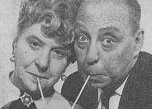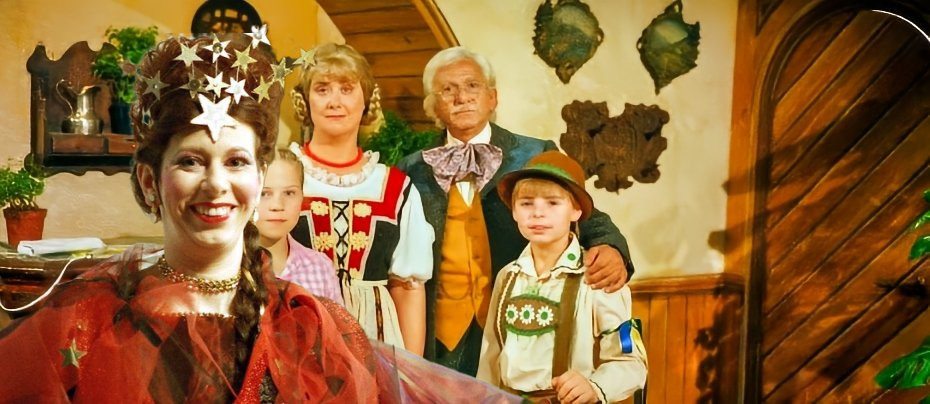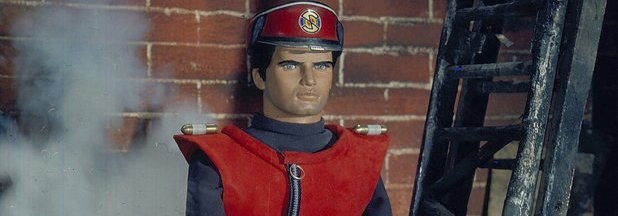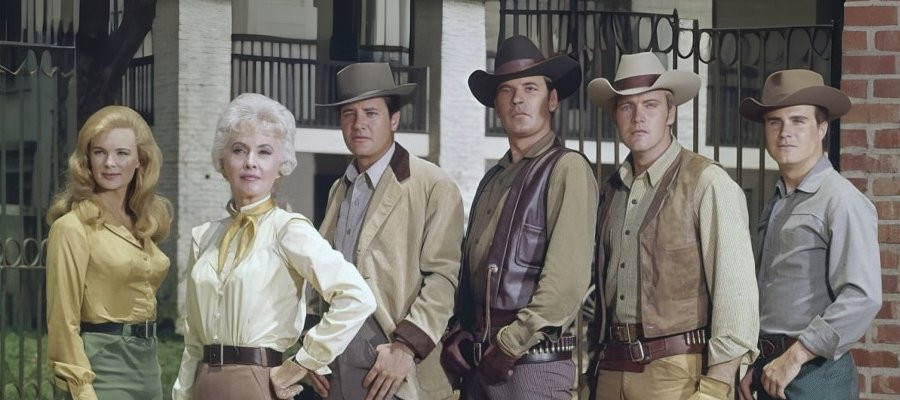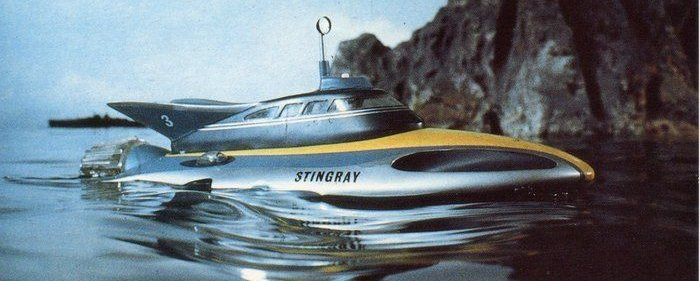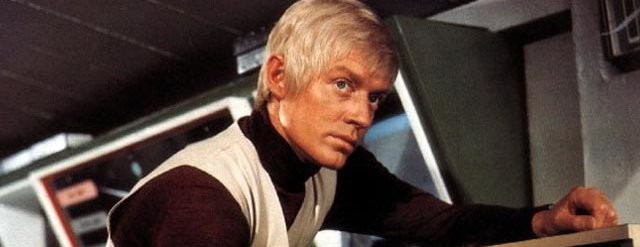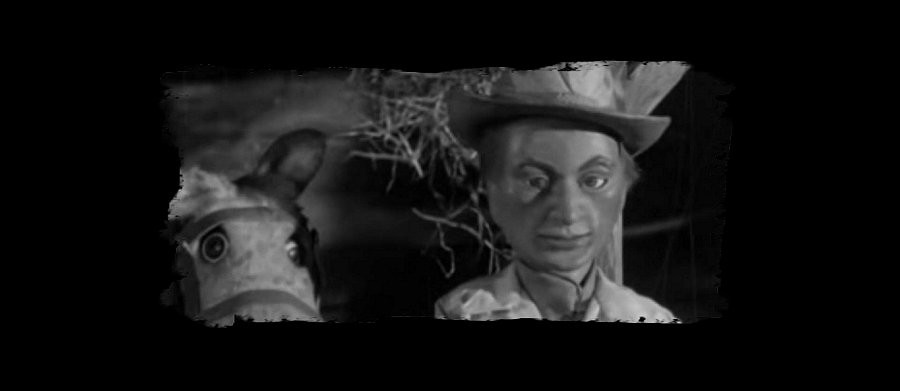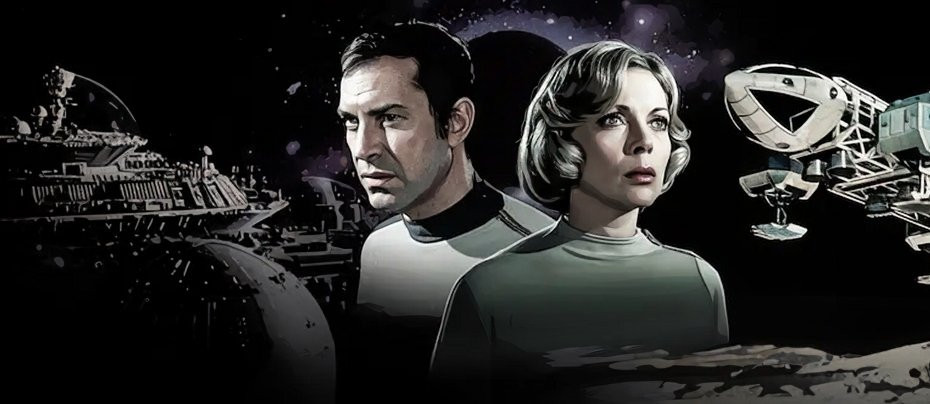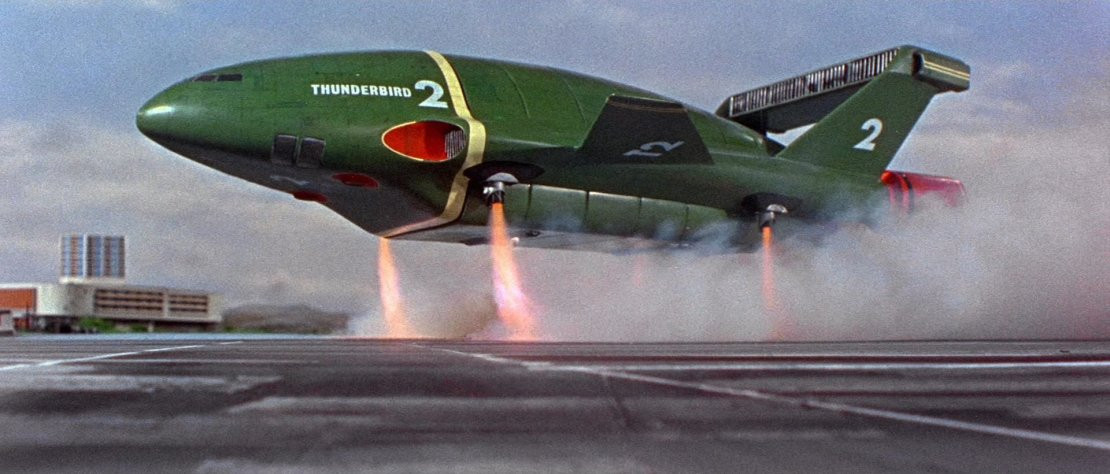
Thunderbirds
1965 - United KingdomIn 1965, television history was subtly but unmistakably transformed when Gerry Anderson, co-creator and producer, crossed the previously unmarked line dividing children’s entertainment from more mature storytelling. The result was Thunderbirds—a bold, ambitious action-adventure puppet series consisting of 32 hour-long episodes that redefined what could be expected from a so-called “children’s programme.”
The seventh and most iconic of Anderson’s AP Films/Century 21 Supermarionation productions, Thunderbirds was a near-cinematic tour de force. Its blend of dramatic storytelling, stunning model work, and jaw-dropping special effects—courtesy of future Academy Award winner Derek Meddings—elevated the show far beyond its presumed demographic. This technical wizardry, matched with Barry Gray’s stirring and instantly recognisable musical score, as well as the pioneering puppet work led by John Read and Reg Hill, brought to life a richly imagined near-future world filled with peril, wonder, and hope.

At the heart of Thunderbirds was a brilliantly simple premise: Jeff Tracy, a wealthy ex-astronaut, and his five sons—Scott, John, Virgil, Gordon, and Alan—operate a clandestine rescue organisation, “International Rescue,” from their base on a remote Pacific island. Tasked with responding to disasters beyond the reach of ordinary emergency services, the team employed a fleet of fantastical vehicles—each with its own unique capabilities, all engineered to save lives in the most dramatic fashion imaginable.
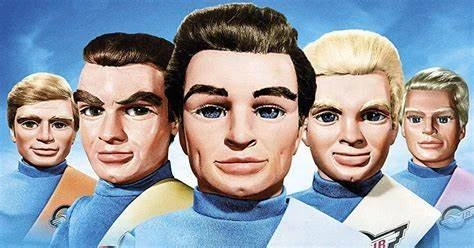
This mission of selfless heroism, combined with the show’s technologically advanced trappings, won the hearts of viewers across generations. The series’ ability to inspire genuine emotional investment—despite its fibreglass puppet cast—is a testament to the quality of its scripts, the conviction of its voice acting, and the effectiveness of its visual storytelling. The characters became more than puppets; they were heroes.
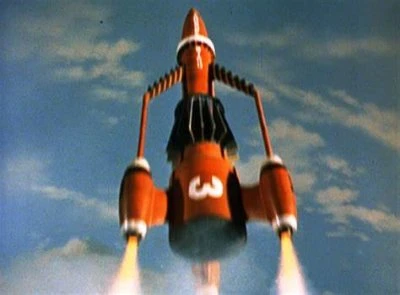
The impact of Thunderbirds went far beyond the small screen. It launched a merchandising phenomenon comparable only to Disney at the time, and introduced audiences to memorable side characters such as the sophisticated Lady Penelope and her sly Cockney chauffeur, Parker—both of whom became cultural icons in their own right.
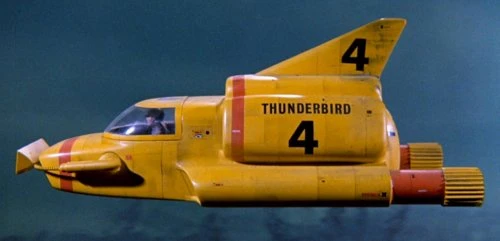
By the time of its conclusion in 1966, Thunderbirds had already secured its place as a national treasure. And for Gerry Anderson, it would become the creative benchmark against which all his future projects were judged—for better or worse.
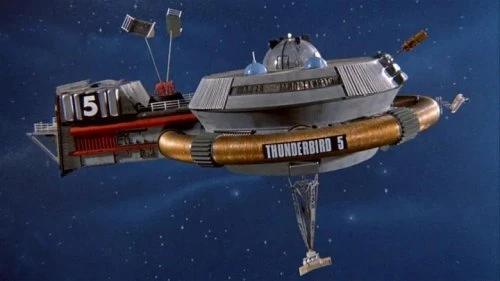
When a big-budget Hollywood live-action version was released nearly four decades later, it only served to highlight the original’s enduring brilliance. Stripped of Anderson’s vision, the film was a hollow echo of its predecessor. It failed to capture the magic, depth, or inventiveness that made the series unforgettable.
And unforgettable it remains. With regular reruns still drawing new fans—who gleefully echo the immortal call-sign “F-A-B!”—Thunderbirds continues to resonate with audiences young and old. More than just a puppet show, it is a masterclass in imaginative storytelling, and a shining example of British television at its most daring and innovative.
Trivia
Based on the success of Gerry Anderson's previous series Stingray, ITC chief Lew Grade was more than happy to back Thunderbirds, which initially had the working title of 'International Rescue'.
With a budget of £25,000 per episode, filming began in the late summer of 1964 and by late September, nine of the proposed 26 half-hour episodes were 'in the can.'
The opening episode 'Trapped In The Sky' was then screened for Grade who was so impressed that he ordered each episode to be doubled in length and increased the budget to £38,000 for each hour.
New footage had to be shot for each of the 'completed' episodes and by the time the first had debuted on ITV, Grade had commissioned a further six episodes along with a £250,000 feature film.
Public response to the series was phenomenal, and the series immediately won £350,000 in overseas sales, although it's failure to secure a network sale in the USA may have had some bearing on Grade's decision not to finance a second series.
Toys
ANDERSON DIE CAST by Paul Webb
Some of the most popular toys of the late 1960s and early 1970s were the vehicles produced by the Mechanno Dinky company in the UK in conjunction with Gerry Anderson's many television series.
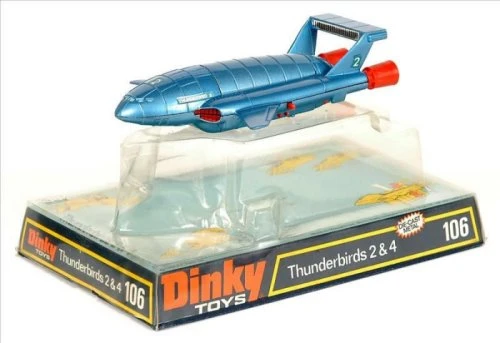
In the beginning there was Thunderbird 2, the gargantuan transport vehicle used by International Rescue. TB2 was originally produced by Dinky in the mid-sixties, and in its correct colour of green, although the pigment was a bit on the dark side, almost a British racing green. The model was entirely made from die-cast metal with spring loaded retractable legs. Unlike later versions of the aircraft, these legs were made of very thin and very brittle plastic. TB2's pod was detachable and came complete with a plastic Thunderbird 4 inside. This version of TB2 was not sold in vast quantities, coupled with the fragile nature of the support legs, good examples of this model are few and far between (I've only ever seen one).
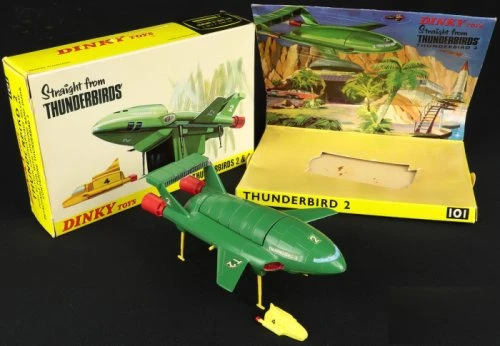
Not wanting to waste a good merchandising opportunity, Dinky went back to the drawing board and a few years later produced a larger version of Thunderbird 2. As with quite a few Dinky TV & Film related toys they neglected to ask anyone what colour TB2 was and produced the toy in a variety of liveries. This version of TB2 was not entirely made from die-cast metal, the upper section of the fuselage was metal with the lower section being made from plastic. These upper and lower sections of fuselage varied in colour, with the most popular combinations being a metallic blue top section with either a white or black plastic bottom section. This TB2 also came with a detachable pod and a plastic TB4 inside.
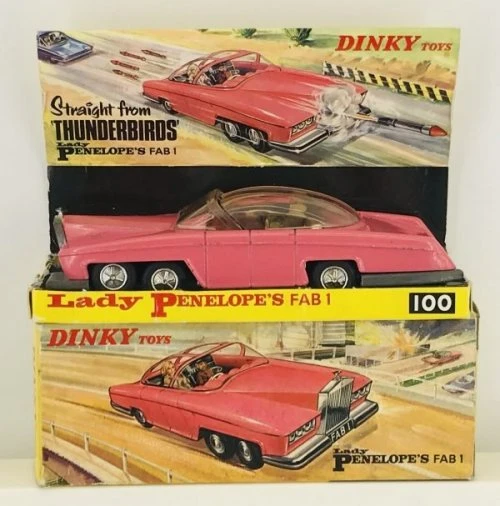
Next on the Dinky production line was FAB1, Lady Penelope's six wheeled pink Rolls Royce. FAB1 was made in approximately 1:32 scale and featured moulded figures of both Parker and Lady Penelope under the huge clear plastic slide back roof canopy. This time Dinky got the colour right and produced the car with a beautiful pink die cast body, although some versions were produced in an almost fluorescent "shocking" pink, these are not as easy to come by as the normal colour. FAB1 came with real jewelled diamante headlamps and included an array of weapons. The famous front grille pulled down revealing a huge spring loaded missile which could be fired by pushing down on the front of the car (the front axle was part of the spring-loaded mechanism), and four sleek looking red plastic missiles could be fired from four small holes in the back of the car by pushing down on the boot/trunk (the back axle acting the same way as the front). FAB1 became the ultimate addition to any toy collection and soon became Dinky's biggest selling die-cast. Originally selling at a hefty 99p, Lady Penelope's car would now cost you in the region of £100 - £200 depending on condition, box, missiles, etc. Trivia time:~ what was FAB2? (answer at the bottom of the page).
That was it. Of the five Thunderbirds only one was produced, there was also no sign of the many varied vehicles carried by TB2, the Mole, Firefly, etc. Children (and grown ups) had to wait over twenty-five years for the next Thunderbirds die-cast to surface.
In the early 1990s the BBC was gearing up for a re-launch of this classic 1960s television series. Although merchandising was thin on the ground when Thunderbirds first hit our TV screens, a lot had happened in the two and a half decades that had followed: no popular children's TV series or film was complete without a flood of merchandising hitting the shops.
This time the honour of producing the toys fell to Matchbox, Dinky's 1970s rivals. Not content with just rehashing what Dinky had done twenty-five years before, Matchbox opted for a larger fleet from the Thunderbirds range. They produced a TB2, which was almost exactly the same size as the second version Dinky toy, but this time in the correct colour and glazed transfers had replaced the old paper stickers on its fuselage. As before, TB2 had extendable legs and a detachable pod, but this time TB4 was made from die-cast metal and much more detailed than its predecessor. Not dismissing the popularity of the original FAB1, Matchbox produced one of these too, but this time it was slightly more to scale with TB2, measuring only about two inches in length. The Matchbox FAB1 had no features, it was just a six wheeled car with a moulded plastic interior and no figures inside. The roof of the car was again correctly moulded in clear plastic but did not slide back like the original and was (for my liking) slightly too "domed", standing higher than the actual TV version.
Matchbox also produced a die cast TB1 and a TB3 in scale with TB2. These two vehicles were about the same size as each other and TB1 had retractable wings. Both were moulded in the right colours with the correct livery on them, but for some reason (probably cost), TB1's plastic wings were moulded in blue the same as the engine section instead of light grey. To complete the set, Matchbox produced a version of The Mole, the huge drilling vehicle carried in one of TB2's pods. Although very accurate and including a rotating drill, the mole was not in scale with the rest of the vehicles measuring about five inches long.

All five vehicles were available individually on carded bubble packs, or as a complete set (excluding the Mole). This set, known as the "Rescue Pack" became the must have toy for Christmas 1991. The ultimate accessory for these vehicles came in the form of a huge Tracy Island, which had launch bays for TB1 (complete with sliding swimming pool), TB2 (complete with falling cliff face and moving palm trees), and TB3.
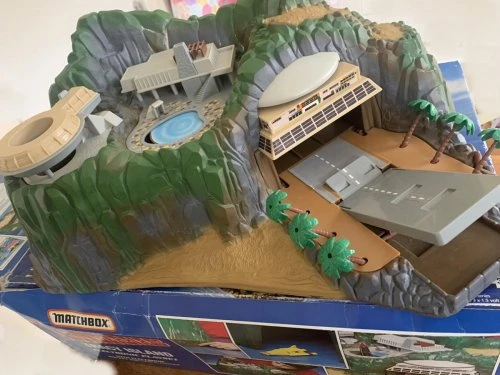
Then, thirty-five years after it was made, Thunderbirds was once again on our screens, digitally remastered in all its glory. Again the fleet was been released in our toyshops, but this time you could get them all. Five Thunderbirds vehicles and FAB1 were now available, produced by a company called Vivid Imaginations, and again TB2 became the most sought after toy over Christmas 2000, this time with its pod holding TB4 and the Mole. This new fleet again came with a Tracy Island, but this time it came with lights and sounds. In fact the five Thunderbird craft and FAB1 also have sounds, each producing a variety of commands in the respective pilots voice at the touch of a button. This set must then surely be the ultimate Thunderbirds vehicle range, all singing, all dancing, all the right colours.
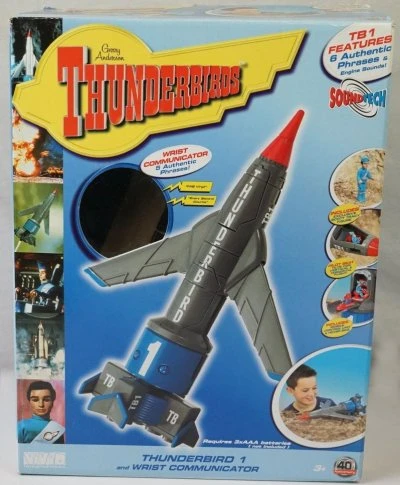
But wait !!! ... They're plastic! Geoff Tracy would never have allowed it in his day.
(By the way - FAB2 was Lady Penelope's yacht.)
Seen this show? How do you rate it?
Seen this show? How do you rate it?
Published on February 7th, 2019. Written by Pip Williams for Television Heaven.


